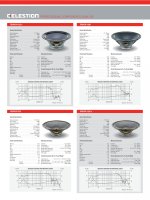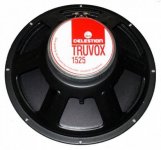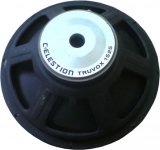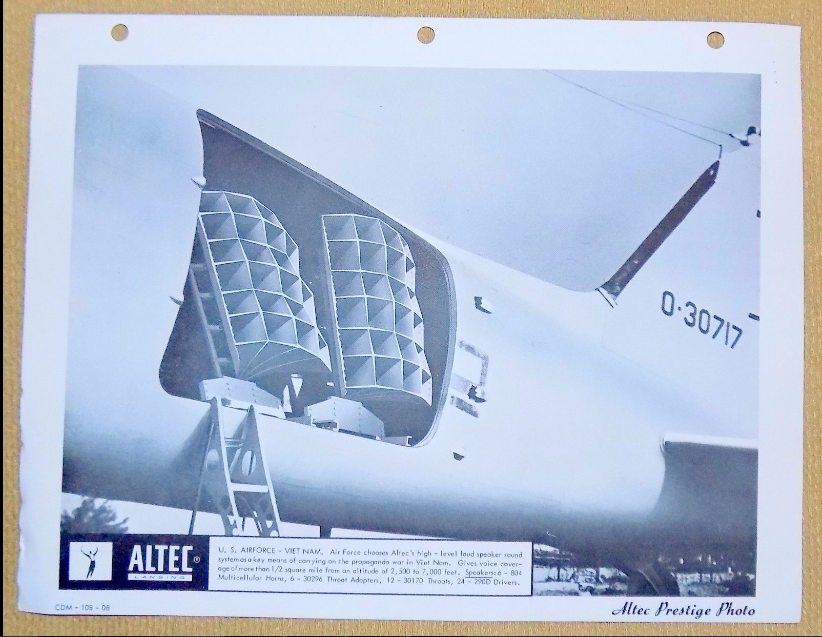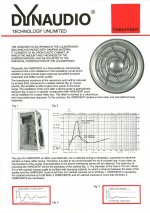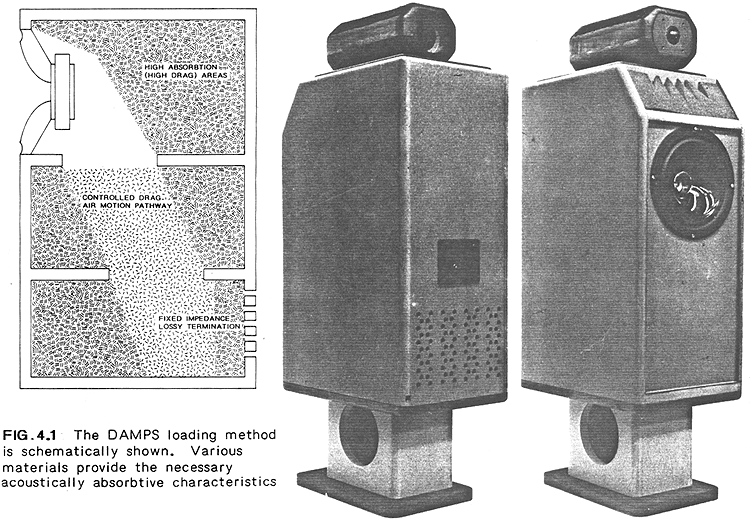Thank you for posting the datasheet. These are indeed and definitely different drivers. It seems they've changed the compilance and moving mass to reduce the needed enclosure volume.
Don’t really ‘know’ what I’m talking about but, would that woofer with some sort of aperiodic hybrid vent work?
Aperiodic makes the driver act as if the box was larger.....if it’s possible to reduce the volume enough with all else the same idk?
Enough? You can check based on this, but at higher densities it can damp down the driver's HF response, so in general not a good plan when wanting a wide usable BW, i.e. not an option on this thread unless the woofer has some serious 'shout' to benefit from it: GlassWolf's Pages
GM
Enough? You can check based on this, but at higher densities it can damp down the driver's HF response, so in general not a good plan when wanting a wide usable BW, i.e. not an option on this thread unless the woofer has some serious 'shout' to benefit from it: GlassWolf's Pages
GM
Well by enough I meant small enough enclosure to fit the criteria.
Wasn’t aware you lost top end with aperiodic damping....I’ll read that, thanks.
Bob
Thank you for posting the datasheet. These are indeed and definitely different drivers. It seems they've changed the compilance and moving mass to reduce the needed enclosure volume.
Yes, very likely.
Celestion also made several OEM TruVox 15's, one of which (a QSC I believe) was a buyout at PE years ago and used in one of the early diysoundgroup projects.
The guys (Erich and others) liked it a lot and were surprised to find the cheap Celestion played a lot better into the midrange than some expensive 15s.
Now that I have done some research, here's one more specsheet.
This one is from the 2004/2005 catalogue and the TruVox drivers had the latest labels by that time. BUT, I am quite sure there were 1 or 2 small revisions after this one.
Below an early Red Label and a later TruVox.
Attachments
Last edited:
GM;5806671: [B said:
That’s not what I was talking about unless the principle remains the same for stuffing and aperiodic venting?
I meant like the dynaco A25
Last edited:
Celestion also made several OEM Truvox 15's, one of which (a QSC I believe) was a buyout at PE years ago and used in one of the earlier diysoundgroup projects.
QSC bought also drivers from other companies. I've got a screw-on midrange compression driver with a phenol diaphragm labeled QSC laying around somewhere here, I haven't found out yet who's the manufacturer.
The guys (Erich and others) liked it a lot. I remember they were quite surprised to find the cheap Celestion played a lot better into the midrange than some expensive 15s.
The 1525 is very good, in the midrange much better than the 1530, more linear, fewer resonances and lower distortion. I'm surprised Celestion isn't used more often. For my nex project I'd like to use one of their compression drivers, I think about the CDX1-1747 but I'm not sure which one yet.
Now that I actually did some research, here's one more specsheet.
This one is from the 2004/2005 catalogue and the TruVox drivers had the latest labels by that time. BUT, I am quite sure there were 1 or 2 revisions after this one.
Thanks for posting the pictures.
Below an early Red Label and a later TruVox.
The last one looks exactly like the current one, except for the label, but looks do not say much.
Wasn’t aware you lost top end with aperiodic damping....I’ll read that, thanks.
Bob
Yeah, as it shows, it takes a lot of damping to do much in the way of apparent volume increase, so the much increased air mass load on the back of the driver impacts it's higher frequency piston, TL, break-up modes BW.
Not necessarily a bad thing if you're using a guitar driver in a non MI app or even a Lowther or similar in some apps.
GM
That’s not what I was talking about unless the principle remains the same for stuffing and aperiodic venting?
I meant like the dynaco A25
Not even close.............the other is changing the air's properties whereas TJ's vent is an acoustic resistor.
GM
Not even close.............the other is changing the air's properties whereas TJ's vent is an acoustic resistor.
GM
Ok....well then would incorporating some sort of acoustic resistor help here at all?
The 1525 is very good, in the midrange much better than the 1530, more linear, fewer resonances and lower distortion. I'm surprised Celestion isn't used more often. For my nex project I'd like to use one of their compression drivers, I think about the CDX1-1747 but I'm not sure which one yet.
Some years ago I just missed a brand-new boxed pair of TruVox 1525s for €40.
For a while I thought about buying a pair from a shop for 4.5x that price, but then I found another pair of 15s (also NOS and I believe from the same seller), that are similar to the TruVox, albeit with a stronger motor.
The CDX1-1747 would probably my first choice for a 1" at the moment, but I moved on to larger diaphragms.
A 3" diaphragm with a light coned woofer is a recipe for magic 😉
For Camplo it is: a 4" diaphragm with a somewhat heavier cone is a recipe for magic, as well as war on the neighbours

Last edited:
Ok....well then would incorporating some sort of acoustic resistor help here at all?
At this point I'm not sure what the problem is, I lost interest in this seemingly endless debate awhile back.
Anyway, TJ's A.R.U. is for damping an under damped speaker or one that otherwise requires an excessively large/long vent and willing to accept some/a lot of acoustic efficiency reduction to get it, i.e. a compromise between a typical high gain vent Vs sealed.
Scroll down to pg. 20 to read about a kit build, tuning with ARU: https://www.americanradiohistory.com/Archive-Audiocraft/Audiocraft-1957-08.pdf
I prefer RCA's Harry Olson's earlier? vent fine tuning to 'critically' damp a traditionally designed vent to remove any 'hangover'/'boom': Click Test | GM210 | Flickr
GM
Yeah, two racks of [3] 803 300 Hz horns each with dual 1.4" 290 compression drivers for when you want to broadcast 10+ mi. away.
GM
GM
Do you refer to the LS-11?
In this cabinet the bass response is controlled by a plate that screws over the vent that can be tweaked for room size. The vent is completely shut for small rooms and default is a half-covered vent.


Driver was the famous RCA LC-1A.
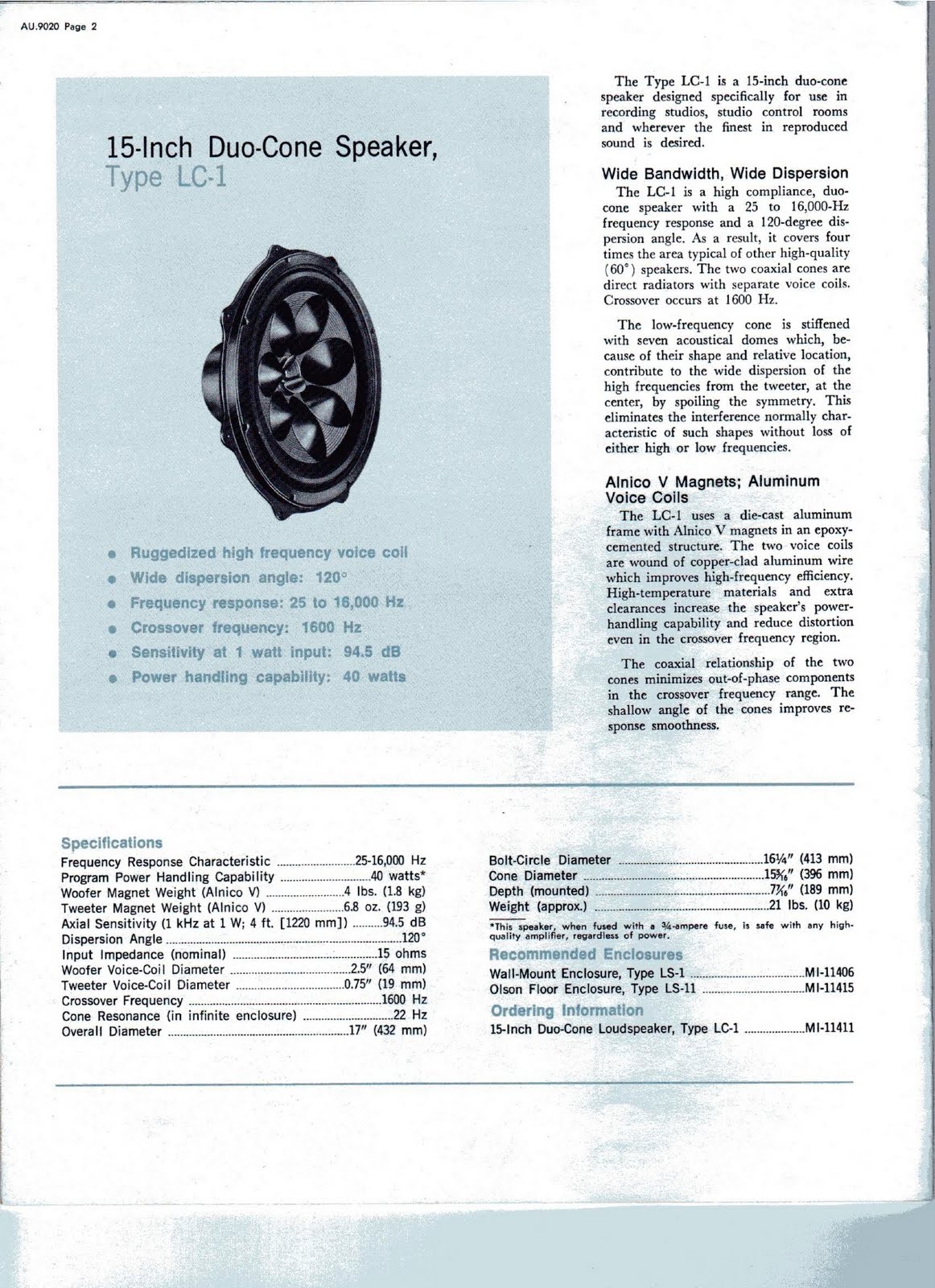
In this cabinet the bass response is controlled by a plate that screws over the vent that can be tweaked for room size. The vent is completely shut for small rooms and default is a half-covered vent.


Driver was the famous RCA LC-1A.

No, that's obviously only a manually adjusted vent, which originally was a lever controlled hinged, gasketed flap till the bean counters had their say.
Any 'critical' damping by manufacturers was normally done with the grill cloth and later, foam density selection, though Altec did offer foam plug inserts for some of their later ducted port consumer speakers.
GM
Any 'critical' damping by manufacturers was normally done with the grill cloth and later, foam density selection, though Altec did offer foam plug inserts for some of their later ducted port consumer speakers.
GM
In the 80s Dynaudio came up with this:
Something like the Variovent but a hybrid blend with a slot vent.....I’ve never seen the way the box is built for the A25 but I think it’s slot loaded and aperiodic
(Correct me if I’m wrong)
Was just thinking that something along these lines would maybe allow less box volume for use of the driver that is otherwise acceptable. (15FH500)
Just spitballing.....don’t know if it would work to keep f3 low enough.
Last edited:
At this point I'm not sure what the problem is, I lost interest in this seemingly endless debate awhile back.
Yah....huh
I prefer RCA's Harry Olson's earlier? vent fine tuning to 'critically' damp a traditionally designed vent to remove any 'hangover'/'boom': Click Test | GM210 | Flickr
GM
That is a cool design...still probably too big for Camplo?
I love going through audio archives.....never know what has slipped through the cracks that might be perfect for modern drivers.
Bob
15hr day yesterday! Rain day today.
I'll have to go back and thoroughly read some of these post, I really want just a 2 way but you guys are putting these ideas of a super great mid 15, in my mind, that I won't be able to get bass with lol!
So for now the Faital FH500 (16ohm) and the AE15m are my top pics.
I've got more than a few people telling me that EQ is completely acceptable for bass extension and hi fidelity. I have my reservations but theres a lot of reasons that it would work fine too. At half the box size, lighter cone, and other optimal specs, I'm starting to lean towards the AE's again. I just wish the AE's were 16ohms, but I can't have it all, I guess.
No different with the horns. The guy on ebay sold me, on a pair of JMLC's for just under 400 bucks shipped. He said shipping was about 60 bucks from Germany, which only confuses me that shipping from Poland is 700... His horns are basically fiberglass, so maybe the weight difference is the factor. So now I have to deal with the larger c-t-c spacing but I am more so satisfied knowing that traditional horns generally sound better, or at least, require much less eqing (which coincidentally results in better signal representation) and that the issue of beaming is not a factor for me while doing studio work but we'll see how it plays out for family movie night.
I'll have to go back and thoroughly read some of these post, I really want just a 2 way but you guys are putting these ideas of a super great mid 15, in my mind, that I won't be able to get bass with lol!
So for now the Faital FH500 (16ohm) and the AE15m are my top pics.
I've got more than a few people telling me that EQ is completely acceptable for bass extension and hi fidelity. I have my reservations but theres a lot of reasons that it would work fine too. At half the box size, lighter cone, and other optimal specs, I'm starting to lean towards the AE's again. I just wish the AE's were 16ohms, but I can't have it all, I guess.
No different with the horns. The guy on ebay sold me, on a pair of JMLC's for just under 400 bucks shipped. He said shipping was about 60 bucks from Germany, which only confuses me that shipping from Poland is 700... His horns are basically fiberglass, so maybe the weight difference is the factor. So now I have to deal with the larger c-t-c spacing but I am more so satisfied knowing that traditional horns generally sound better, or at least, require much less eqing (which coincidentally results in better signal representation) and that the issue of beaming is not a factor for me while doing studio work but we'll see how it plays out for family movie night.
- Home
- Loudspeakers
- Multi-Way
- Is it possible to cover the whole spectrum, high SPL, low distortion with a 2-way?
